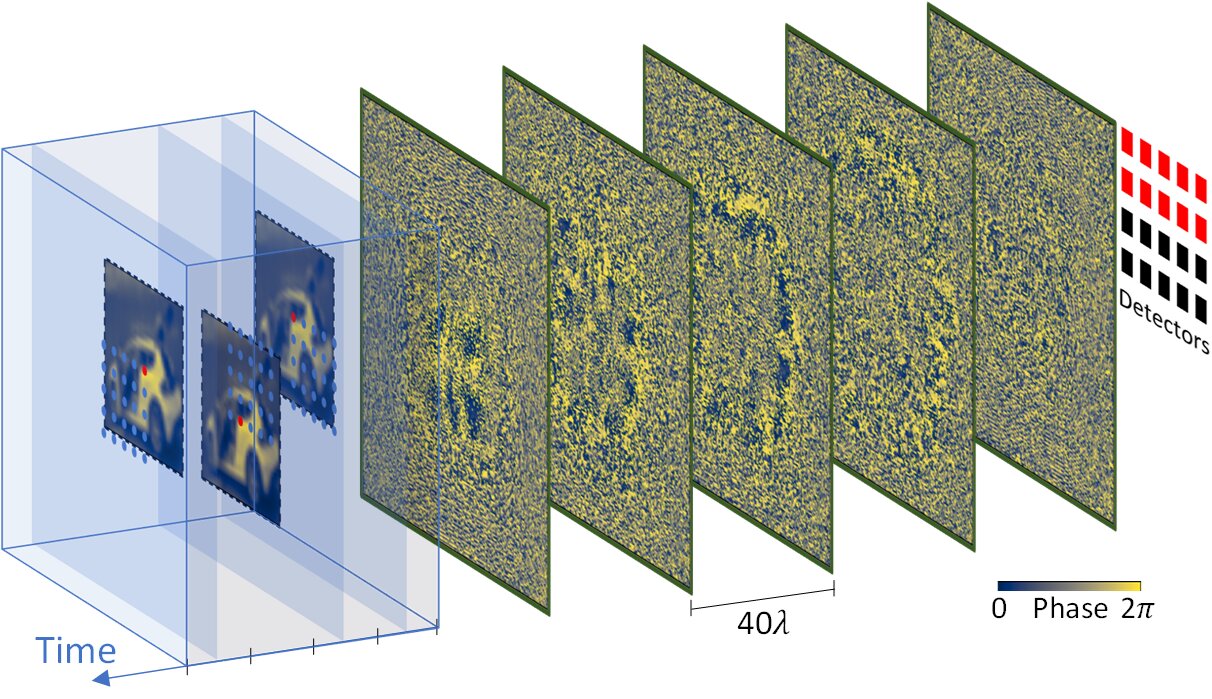Diffractive optical networks use object shifts for performance boost
Optical computing has been gaining wide interest for machine learning applications because of the massive parallelism and bandwidth of optics. Diffractive networks provide one such computing paradigm based on the transformation of the input light as it diffracts through a set of spatially-engineered surfaces, performing computation at the speed of light propagation without requiring any external power apart from the input light beam. Among numerous other applications, diffractive networks have been demonstrated to perform all-optical classification of input objects.
Researchers at the University of California, Los Angeles (UCLA), led by Professor Aydogan Ozcan, have introduced a “time-lapse” scheme to significantly improve the image classification accuracy of diffractive optical networks on complex input objects. The findings are published in the journal Advanced Intelligent Systems.
In this scheme, the object and/or the diffractive network are moved relative to each other during the exposure of the output detectors. Such a “time-lapse” scheme has previously been used to achieve super-resolution imaging, for example, in security cameras, by capturing multiple images of a scene with lateral movements of the camera.
Drawing inspiration from the success of time-lapse super-resolution imaging, UCLA researchers have utilized “time-lapse diffractive networks” to achieve greater than 62% blind testing accuracy on the all-optical classification of CIFAR-10 images, a publicly available dataset containing images of airplanes, cars, cats, etc. Their results achieved a significant improvement over the time-static diffractive optical networks.
The same research group had previously demonstrated ensemble learning of diffractive networks, where several diffractive networks operated in unison to improve image classification accuracy. However, with the incorporation of the time-lapse scheme, it is possible to outdo an ensemble of more than 15 networks with a single standalone diffractive network, significantly reducing the footprint of the diffractive system while eliminating the complexities of physical alignment and synchronization of several individual networks. The researchers also explored the incorporation of ensemble learning into time-lapse image classification, which revealed greater than 65% blind testing accuracy in classifying CIFAR-10 images.
For the physical implementation of the presented time-lapse classification scheme, the simplest method would exploit the natural jitter of the objects or the diffractive camera during imaging and allow the benefit of time-lapse to be reaped with no additional cost apart from a slight increase in the inference time due to detector signal integration during the jitter.
This research on time-lapse image classification is a demonstration of utilizing the temporal degrees of freedom of optical fields for optical computing and presents a large step forward toward all-optical spatiotemporal information processing with compact, low-cost and passive materials.
More information:
Md Sadman Sakib Rahman et al, Time‐Lapse Image Classification Using a Diffractive Neural Network, Advanced Intelligent Systems (2023). DOI: 10.1002/aisy.202200387
Citation:
Diffractive optical networks use object shifts for performance boost (2023, February 22)
retrieved 22 February 2023
from https://techxplore.com/news/2023-02-diffractive-optical-networks-shifts-boost.html
This document is subject to copyright. Apart from any fair dealing for the purpose of private study or research, no
part may be reproduced without the written permission. The content is provided for information purposes only.
For all the latest Technology News Click Here
For the latest news and updates, follow us on Google News.

